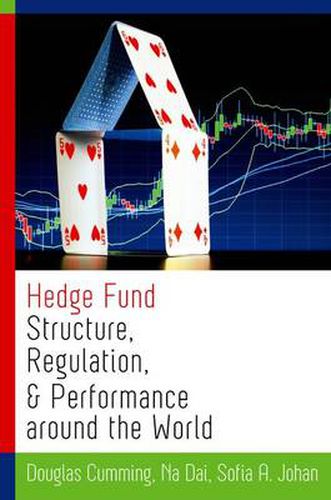Readings Newsletter
Become a Readings Member to make your shopping experience even easier.
Sign in or sign up for free!
You’re not far away from qualifying for FREE standard shipping within Australia
You’ve qualified for FREE standard shipping within Australia
The cart is loading…






Hedge funds and their managers have been vilified in recent times for their high-risk activities and relative lack of regulatory oversight. A recurrent concern shared by market participants and regulators around the world is that the increasing size of the hedge fund industry coupled with potential agency problems, activist investment practices, and herding behavior may exacerbate financial instability. However, while it is frequently suggested that hedge funds are unregulated, they are in fact regulated to some degree in every country around the world.
It is important to consider differences in legal and institutional settings across countries as they directly affect the structure, governance, and performance of hedge funds. In this book, the authors consider data from a multitude of countries to understand how and why hedge fund markets differ around the world. While hedge funds are hardly regulated in the US, other jurisdictions implement different and sometimes more onerous sets of regulatory requirements. As explained in the book, international differences in hedge fund regulation include, but are not limited to, minimum capitalization requirements, restrictions on the location of key service providers, and different permissible distribution channels via private placements, banks, other regulated or non-regulated financial intermediaries, wrappers, investment managers, and fund distribution companies.
$9.00 standard shipping within Australia
FREE standard shipping within Australia for orders over $100.00
Express & International shipping calculated at checkout
Hedge funds and their managers have been vilified in recent times for their high-risk activities and relative lack of regulatory oversight. A recurrent concern shared by market participants and regulators around the world is that the increasing size of the hedge fund industry coupled with potential agency problems, activist investment practices, and herding behavior may exacerbate financial instability. However, while it is frequently suggested that hedge funds are unregulated, they are in fact regulated to some degree in every country around the world.
It is important to consider differences in legal and institutional settings across countries as they directly affect the structure, governance, and performance of hedge funds. In this book, the authors consider data from a multitude of countries to understand how and why hedge fund markets differ around the world. While hedge funds are hardly regulated in the US, other jurisdictions implement different and sometimes more onerous sets of regulatory requirements. As explained in the book, international differences in hedge fund regulation include, but are not limited to, minimum capitalization requirements, restrictions on the location of key service providers, and different permissible distribution channels via private placements, banks, other regulated or non-regulated financial intermediaries, wrappers, investment managers, and fund distribution companies.